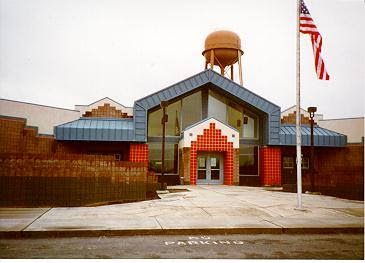
- Details
- By Native News Online Staff
FORT HALL, Idaho — The Shoshone-Bannock Tribes’ Tribal Office of Emergency Management reported on Tuesday 14 new COVID-19 cases on the Fort Hall Reservation, bringing the total to 84 overall positive cases since the pandemic started in early April.
Of the 84 cases, 29 are currently being monitored, 44 have recovered, two are currently hospitalized and there is one confirmed death. Test results are compiled and reported by the Fort Hall Indian Health Clinic and Community Health Center.
The Fort Hall Indian Health Clinic conducted 14 tests on Monday, and seven came back positive. Of the seven, three are Shoshone-Bannock on the reservation and the remaining four are American Indians living off the reservation.
On Tuesday, 32 tests were conducted and five came back positive. More results were due back on Tuesday evening.
HRSA also completed 25 tests on Saturday and five tests last Monday, receiving one positive result from Saturday and one positive from Monday. These numbers have been added to the total positive and monitored cases. To date, 395 tests have been completed by the Community Health Center and HRSA.
Last week, Fort Hall Clinic set a regional record by conducting 35 tests in one day for a single Abbott ID NOW machine. The machine is a rapid molecular COVID-19 testing machine that allows for fast diagnosis in less than 15 minutes.
The Fort Hall Clinic has testing capacity to conduct 20 to 25 tests per day with a quick turnaround time. In the region, the clinic has the fastest testing in comparison to the local health centers. The Clinic also announced hiring a new lab tech, a new physician’s assistant and a new licensed practical nurse. The clinic currently has 61 Abbott test kits left and is waiting on supplies to restock from the Portland Indian Health Service Area office.
Tribal health officials say tribal elders are being affected by direct contact with positive cases within their homes. TOEM stresses the younger generation to wear face masks when outside of their home and to wash their hands upon returning home.
When tribal citizens feel ill they should quarantine themselves from elderly family members and call Fort Hall Clinic at 208-238-5400 to speak with a health official to get tested.
According to tribal health officials, those contacted by a ‘contract tracer’ will be instructed to isolate and schedule a test immediately.
COVID-19 symptoms include a fever (temperature of 100.4 degrees Fahrenheit or higher), cough, shortness of breath, headache, muscle and body aches, sore throat, fatigue and extreme tiredness, GI symptoms (nausea, vomiting, diarrhea), and loss of taste and smell.
Each of the tribe’s health centers, including IHS, Tribal Health and HRSA have tribal contact tracers actively monitoring positive individuals. Due to the increase of positive cases, contract tracers are being hired at HRSA and Tribal Health.
More Stories Like This
Native News Weekly (August 25, 2024): D.C. BriefsUS Presidents in Their Own Words Concerning American Indians
Monday Morning (November 24, 2025): Articles You May Have Missed This Past Weekend
Navajo Nation President Nygren Defends Record, Says Speaker’s Actions ‘Disgraceful’ and Politically Driven
Native News Weekly (November 23, 2025): D.C. Briefs
Help us tell the stories that could save Native languages and food traditions
At a critical moment for Indian Country, Native News Online is embarking on our most ambitious reporting project yet: "Cultivating Culture," a three-year investigation into two forces shaping Native community survival—food sovereignty and language revitalization.
The devastating impact of COVID-19 accelerated the loss of Native elders and with them, irreplaceable cultural knowledge. Yet across tribal communities, innovative leaders are fighting back, reclaiming traditional food systems and breathing new life into Native languages. These aren't just cultural preservation efforts—they're powerful pathways to community health, healing, and resilience.
Our dedicated reporting team will spend three years documenting these stories through on-the-ground reporting in 18 tribal communities, producing over 200 in-depth stories, 18 podcast episodes, and multimedia content that amplifies Indigenous voices. We'll show policymakers, funders, and allies how cultural restoration directly impacts physical and mental wellness while celebrating successful models of sovereignty and self-determination.
This isn't corporate media parachuting into Indian Country for a quick story. This is sustained, relationship-based journalism by Native reporters who understand these communities. It's "Warrior Journalism"—fearless reporting that serves the 5.5 million readers who depend on us for news that mainstream media often ignores.
We need your help right now. While we've secured partial funding, we're still $450,000 short of our three-year budget. Our immediate goal is $25,000 this month to keep this critical work moving forward—funding reporter salaries, travel to remote communities, photography, and the deep reporting these stories deserve.
Every dollar directly supports Indigenous journalists telling Indigenous stories. Whether it's $5 or $50, your contribution ensures these vital narratives of resilience, innovation, and hope don't disappear into silence.
 The stakes couldn't be higher. Native languages are being lost at an alarming rate. Food insecurity plagues many tribal communities. But solutions are emerging, and these stories need to be told.
The stakes couldn't be higher. Native languages are being lost at an alarming rate. Food insecurity plagues many tribal communities. But solutions are emerging, and these stories need to be told.
Support independent Native journalism. Fund the stories that matter.
Levi Rickert (Potawatomi), Editor & Publisher

